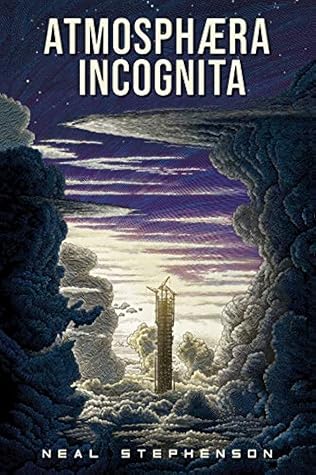More on this book
Community
Kindle Notes & Highlights
It wasn’t long before someone pointed out that, from an aerodynamics standpoint, the tower was a horror show. Basically every strut and every cable was a cylinder—one of the draggiest shapes you can have. If we snapped an airfoil-shaped fairing around each of those cylinders, however, leaving it free to pivot into the wind, the drag went down by an order of magnitude and the Steel Bill dropped like—well, like a wrench dropped from the roof of a Top Click casino. And those fairings would have other benefits too; filled with lightweight insulation, they would reduce the thermal ups and downs
...more
When the jet stream played on the tower’s upper reaches like a firehose slamming into a kid’s Tinkertoy contraption—when, in other words, the maximum possible crush was being imposed on the downwind legs—the wings on that side would be trimmed so as to lift the whole thing upward and relieve the strain. Performing a kind of aerodynamic jujitsu, redirecting the very energy that would destroy the tower to actively hold it up. The tower would become half building, half kite.
“All things cyber. Anything with code in it. Anything connected to the Internet. This stuff creeped into our lives and we got dependent on it. Take it away and the economy crashes—just like the tower. You gotta embrace it.”
“When I was younger, I was frustrated that we weren’t building big ambitious stuff anymore. Just writing dumb little apps. When Carl came along with the tower idea, and I understood it was going to have to fly—that it couldn’t even stand up without embedded networks—the light went on. We had to stop building things for a generation, just to absorb—to get saturated with—the mentality that everything’s net-worked, smart, active. Which enables us to build things that would have been impossible before, like you couldn’t build skyscrapers before steel.”
“What are you talking about?” Dave demanded. He wasn’t handling this especially well. Fortunately Hiram interceded. “Sprites,” he explained. “We see ’em all the time.”
“A couple of decades ago,” she said, “some of our orbiting gamma ray observatories began picking up incredibly powerful bursts. Long story short, it became obvious that these were coming not down from deep space but up from below—from the earth. So powerful that they maxed out the sensors, so we couldn’t even tell how massive they actually were. Turned out they were coming from thunderclouds. The conditions in those storm towers down there are impossibly strange. Free electrons get accelerated upward and get kicked up into a hyperenergetic state, massively relativistic, and at some point they
...more
And an astronaut he was, on that morning. One without a rocket. Exploring, and embracing the dangers, not of outer space but of the atmosphæra incognita that, hidden from earthlings’ view by thunderheads, stretches like an electrified shoal between us and the deep ocean of the cosmos.


